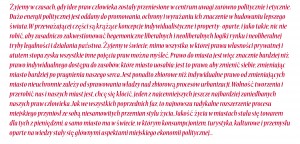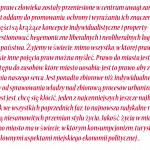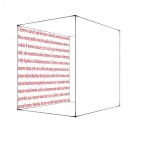Petr Dub: Anthropologist Translated

/ Laboratorium Sztuki 2016. Artysta jako podróżnik
kuratorka: Maria Niemyjska
Petr Dub: Anthropologist Translated
25.11.2016 – 08.01.2017
otwarcie wystawy: 25.11.2016 (piątek), godz. 18.00 / wstęp wolny
Wystawa Petra Duba kończy cykl „Artysta jako podróżnik”. Temat ten jest bezpośrednią kontynuacją wątków poruszanych przez dwa wcześniejsze lata w ramach serii „Artysta jako antropolog”. Prezentując szereg działań, w których artyści zbliżyli się do antropologów, trudno było zlekceważyć fakt, że duża część z pokazywanych projektów realizowana była w drodze, a dla wielu realizacji podróż stanowiła wręcz konieczny warunek zaistnienia. Współcześni artyści nieustannie podróżują, poszukując inspiracji w prywatnych wyprawach, jak również uczestnicząc w programach rezydencjalnych.
Do takich artystów należy także Petr Dub, który wystawę „Anthropologist Translated” realizuje w ramach rezydencji artystycznej organizowanej przez Toruńską Agendę Kulturalną. Prezentowana w Wozowni praca odnosi się do podróży także na innej, bardziej metaforycznej płaszczyźnie – chodzi o wędrówkę znaczeń. Jedną ze ścian galerii wypełni fragment eseju „Prawo do miasta” Davida Harveya, przetłumaczonym na język polski przez Google Translator. W ten sposób artysta podkreśla możliwość interpretacji tego buntowniczego przesłania w kontekście lokalnych problemów. Wędrówka tekstu pomiędzy językami i regionami odzwierciedla wędrówkę globalnego kryzysu, który wywołuje nieprzewidywalne skutki w różnych miejscach globu. Odbiorcy będą mieli możliwość poprawiania i komentowania tekstu przy pomocy przygotowanych przez artystę narzędzi, uzgadniając jego brzmienie z zasadami językowymi, ale też nasycając go własnymi poglądami.
Petr Dub – ur. w 1976 r. w Pradze. Studia magisterskie i doktoranckie odbył na FAVU BUT w Brnie oraz AAAD w Pradze. Jego prace obejmują szerokie spektrum problemów współczesnego świata: ideologii, kapitału, pamięci, globalności i lokalności. Tworzy instalacje oraz obrazy-obiekty, w których ukryte pod płótnem elementy konstrukcji napierają na gładką, napiętą „skórę” obrazów, powodując różnokształtne wybrzuszenia. Poszczególne cykle prac stanowią komentarz do różnych zjawisk kultury, ale mówią też o prywatnych doświadczeniach.
Petr Dub: Anthropologist Translated
25.11.2016 – 08.01.2017
exhibition opening: 25.11.2016 (Friday), 6 p.m. / admission free
The exhibition of Petr Dub ends a project “The artist as a traveler.” This theme is a direct continuation of topics discussed in two previous years as a part of series “The artist as anthropologist.” Presenting the series of activities in which artists approached the anthropologists, it was hard to ignore the fact that a large part of the projects was implemented during the journey. Contemporary artists are constantly traveling, seeking inspiration in private expeditions, as well as participating in residential programs.
Petr Dub realizes the exhibition “Anthropologist Translated” within the framework of residency programme of the Torun Cultural Agenda. The work includes the dimension of travel on more metaphorical plane. It’s about the journey of meanings. One of the walls of the gallery is covered with the David Harvey’s essay “Right to the City”, translated into Polish by Google Translator. In this way, the artist emphasizes the ability to interpret the rebellious message in the context of local issues. Migration of the text between languages and regions reflects the journey of the global crisis, which causes unpredictable results in different places of the globe. Guests of the exhibition will be able to correct and comment the text, using the tools developed by the artist. They will make the text consistent with the rules of Polish language, but they can also make impact on the content of the essay.
Petr Dub – born. in 1976. Master and doctoral studies on FAVU BUT in Brno and AAAD in Prague. His works cover a wide spectrum of problems of the contemporary world: the ideology, capital, memory, globality and locality. He creates installations and paintings-objects, in which elements hidden under canvas press against the smooth, taut “skin” of the painting, causing various shapes bulge. The different series of works are a commentary on the various cultural phenomena, but also talk about personal experiences.


